Okay, we realized that Golfing Gimmicks needs an article on posture-related issues. We were lacking a piece on how to improve your golf swing posture, posture-enhancing drills, and other tips to become a more flexible player on the green. We briefly touched on posture- and stance-related problems in a recent article. We talked about how two-thirds of golfers are facing these issues right now, such as Loss of Posture. You can find lots of articles on how to improve golf posture on Google, however, we’ve written a very comprehensive piece on this issue.
So, harken back to our tips, adopt these golf posture drills, and under-burden your back. Check out the FAQs at the end if you have further questions. If you have any tips to share then do that in the comment section. We’d love to hear more from our avid readers and habitual golfers.

Improve your golf swing posture: Amazing tips ahead
The Physics of Golf Posture
Golf is an intricate game governed by angles and physics; even minor shifts in posture can have drastic ramifications for its dynamics. Hip, knee, and wrist alignment along with spine angle and shoulder position all influence energy transfer through the swing sequence. Achieve consistent ball striking with optimal impact depends on maintaining a stable posture throughout. It’s very important to understand the physics behind it all to improve your golf swing posture.
Understanding the Fundamentals of Golf Posture
Alignment and Balance
Maintaining correct alignment and balance is the cornerstone of a strong golf posture. Make sure your upper spine, knees, and balls of feet are in sync while turning inward slightly at your back knee and keeping weight evenly distributed between both feet.
Arm Positioning
Stay relaxed with straight arms that are relaxed with shoulders backed. Hold the club at waist level so your arms may naturally extend while also positioning the club properly. It’s one of the most vital golf posture drills to remember when preparing for a game.
Hip and Spine Angle
Bend slightly at your hips while keeping a straight back until your club touches the grass. Avoid bending at your waist; rather focus on hinging from your hips for optimal spinal angle alignment.
Foot Placement and Toes
Balance your feet shoulder-width apart to achieve a solid foundation for swing. Flare out your toes slightly to enable proper rotation while remaining balanced throughout your swing.
Common Posture Issues and Corrections
Do you know that having a bad posture is the second-most prevalent reason for golf-related injuries today? It’s sandwiched between too much practice and strength gripping. So, here we will discuss some common posture-related issues. Hopefully, this simple golf posture training aid will turn you into a better golfer.
C-Posture
C-Posture, with its characteristic round upper back and shoulders, can limit your swing motion and mobility. Address muscle imbalances and joint restrictions through targeted exercises as well as appropriate setup positioning.
Arm Positioning
Make sure that both arms are parallel with the ground with your right elbow bent towards its midline and in a “door open” position. Maintain a slight bend in your right arm as needed to create balance in this pose.
Spine Angle
Establish the optimal spine angle by tilting it toward one o’clock and bending forward from your hips while keeping your back straight and then maintaining this angle throughout your swing for optimal performance.

Key Principles of Proper Arm Position
Achieving the correct arm position in golf requires attention to several key principles. We have to look closely at these golf swing postures to improve your golfing skills. In this section, we will explore some of these key principles for your convenience:
Alignment
Make sure your arms remain aligned properly with both the club and body throughout your swing, maintaining an uninterrupted line from shoulders to hands while having extended yet relaxed arms.
Elbow Position
Position your elbows to promote an efficient and repeatable swing motion. Keep them close to your body throughout both backswing and downswing to reduce any excessive movement that might compromise swing stability.
Wrist Action
Maintain wrist control to avoid excess wrist movement and maintain clubface stability during impact. Avoid unnecessary wrist hinge or cupping as that could result in inconsistent ball striking and direction control.
Tips for Proper Arm Position
Another oft-ignored aspect of golf swing posture is the right arm positioning. So, in this section, we’ll discuss some tips to help you in this regard. Implement the following tips and techniques to achieve optimal arm position in your golf swing:
Arms Parallel to the Ground
At address, make sure that your arms are parallel to the ground with your right elbow pointing downward and toward the midline of the body. Now, this position promotes a neutral wrist angle and sets you up for an effective swing action.
Right Arm Bend
As part of your backswing, allow the right arm to bend slightly but in an orderly fashion; do not overextend or strain this area as this could result in tension and loss of club control. This tip is one of the most important golf posture drills to remember, dear readers.
Maintain Bend at the Top
At the top of your backswing, maintain a slight bend in the right arm ranging from 75 to 90 degrees to ensure a seamless transition into the downswing and maximum power production during the impact zone. This position also aids the transition between shots.
Full Extension Post-Impact
After striking the ball, aim for full extension of your right arm approximately 45 degrees past it; this ensures a more balanced finish and maximum power transfer through your swing. That’s how you can improve your posture to a greater extent.
Arms in Front, Not on the Side
As part of your swing, aim to keep arms closer to the body as opposed to swinging them out to either side to ensure an efficient path while decreasing risk factors like over-the-top movements and swing flaws.
Common Errors in Arm Position
Now, you gotta identify and correct common errors in arm position to optimize swing mechanics and performance. Your golf swing posture needs to be improved by removing the errors in arm positioning. So, here’s what you should do:
Chicken Wing
Avoid adopting the “chicken wing” position, wherein your left elbow flares out excessively during the follow-through, restricting club rotation and impeding power production. This simple position restricts club movement while hindering power generation.
Overextension
Be mindful to maintain a relaxed yet controlled arm position during your backswing to avoid unnecessary tension and loss of club control. Focus on maintaining an ergonomic arm stance during all aspects of the swing process.
Casting
Strive to avoid “casting” your club with your arms, in which case its clubhead will be released prematurely on the downswing. Also, keep wrist cock and lag in balance to maximize clubhead speed and control upon impact.
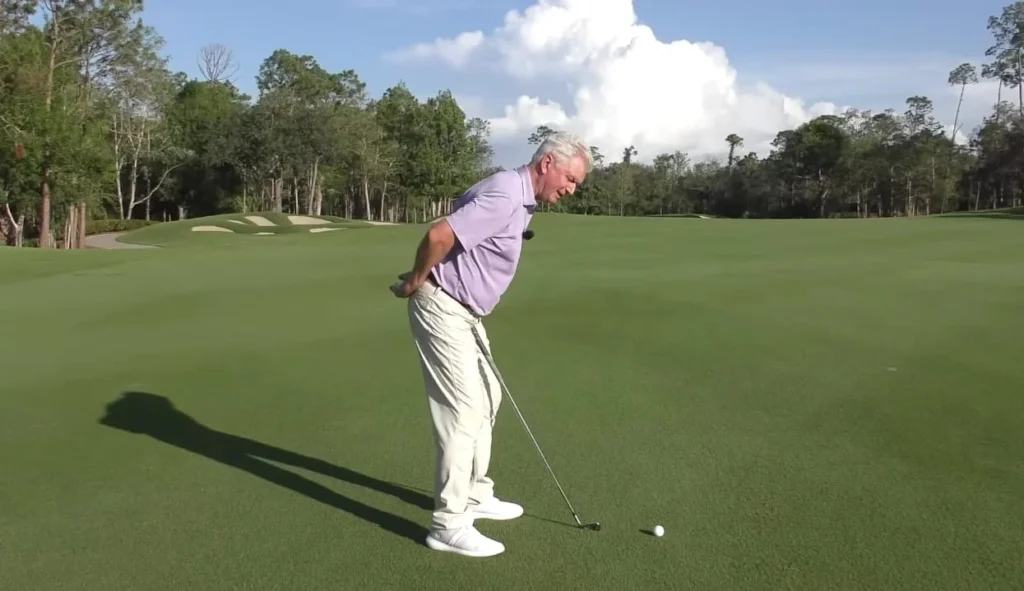
Key Principles of Foot Positioning
Achieving the correct foot positioning in golf involves adhering to several key principles. If you wanna overcome the common faults in golf swing posture then it’s important to be mindful of all these principles. So, here’s what you should bear in mind:
Stance Width
Establish an ideal stance width that ensures stability without hindering mobility. Most golfers find a stance width equaling shoulder width to be ideal for irons and wedges; drivers and fairway woods typically need wider stance widths to accommodate their longer swing arc.
Toe Alignment
Position your feet so the toes point in an appropriate direction to facilitate optimal body rotation and club path during your swing. While your front foot might incline out slightly toward your target line, your rear foot should face 90 degrees toward it for a square stance.
Weight Distribution
At the address, distribute your weight evenly between both feet with slightly more emphasis placed on the balls of the feet to promote athletic and dynamic postures. Avoid placing too much of your weight on heels or toes as this could compromise balance and hamper rotational movements.
Tips for Proper Foot Positioning
If you wanna overcome foot positioning-related problems and enhance your posture then it’s vital to be mindful of these simple tips. These tips will further improve your posture. Therefore, implement the following techniques to achieve optimal foot positioning in your golf stance:
Stance Width Adjustment
Experience different stance widths during practice sessions until finding one that provides the optimal balance of stability and mobility for your swing style and body type. As needed, adjust width based on which club is being used or shot requirements.
Toe Flare
Flare your toes slightly at the address to facilitate proper hip and pelvic rotation during both the backswing and downswing, creating more natural body turns with a full range of motion and power generation. This small adjustment creates greater naturalness of body movement during these key points in golf’s swing process.
Weight Distribution Awareness
Pay careful attention to how weight is distributed throughout your swing, striving to ensure its centering and balance for optimum stability and control. Execute drills aimed at weight transfer or rotational movement to reinforce proper distribution patterns.
Common Errors in Foot Positioning
Many golfers have trouble with foot positioning. But we’re here to help you out in this case as well. You gotta identify and then correct common errors in foot positioning to optimize swing mechanics and performance. Here’s what you should do to improve your golf posture:
Narrow Stance
Stay away from adopting too narrow of a stance as this could compromise stability and restrict body rotation during swing. Instead, opt for a wider foundation that offers a full range of motion. A narrow stance is one of the best golf posture drills to remember in 2024.
Incorrect Toe Alignment
Maintain an alignment between the toes and target line to help facilitate a square clubface at impact while decreasing misalignments or direction errors. Regularly assess and adjust this aspect of your setup position for consistency in setup positions.
Poor Weight Distribution
Guard against excessive weight shift or imbalance between feet as it could result in swing flaws such as swaying or sliding during swinging motion. Focus on maintaining a stable base throughout your swing to optimize weight transference and power generation.
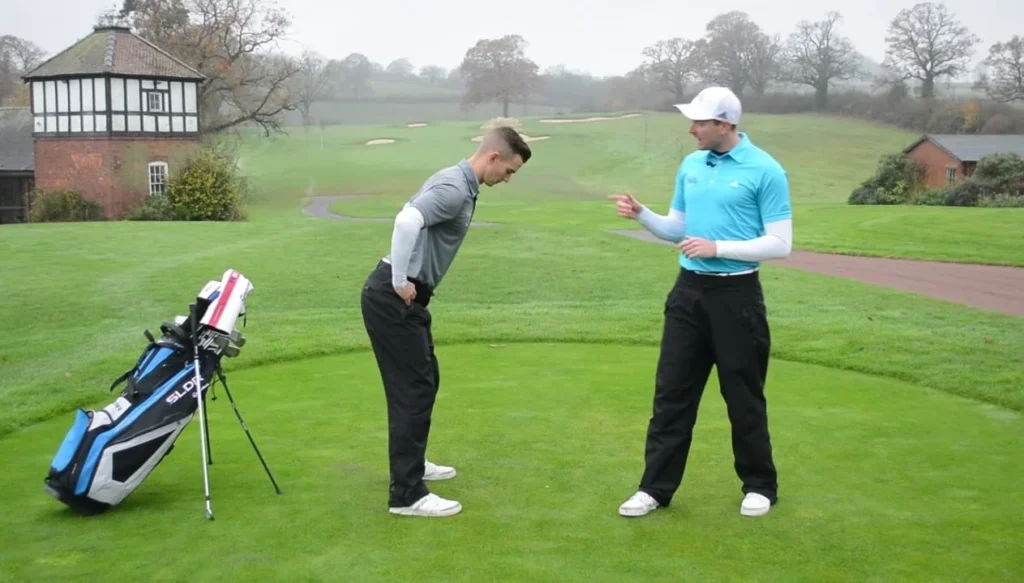
What is C-Posture?
C-Posture refers to a spinal alignment characterized by excessive rounding of the upper back, leading to an exaggerated forward curve similar to that seen in the letters “C.” This deviation from the neutral spine position often happens during the setup phase of the golf swing setup process and compromises both stability and range of motion. Let’s discuss why it happens and how to overcome it. That’s how you can improve your posture beyond belief.
Causes of C-Posture
Knowledge of the causes behind C-posture deviation is paramount to designing effective corrective strategies and treatments. Many factors contribute to its formation, such as:
Muscle Imbalances
Lack of strength in muscles supporting the spine, particularly thoracic extensors and scapular retractor, may contribute to spinal misalignment resulting in C-Posture.
Joint Restrictions
Joint restrictions in the thoracic spine and shoulders may restrict mobility and worsen forward curvature of the upper back, contributing to C-Posture.
Poor Setup Position
Improper setup positions, such as excessive waist bending or improper hip and spine angles, may encourage C-Posture during the address phase of golf swinging.
Effects of C-Posture on Golf Swing
C-Posture can have drastic ramifications on a golfer’s swing mechanics and lead to various performance losses, including:
Limited Mobility
Extreme upper back rounding reduces thoracic spine mobility, hindering the golfer’s ability to rotate during the backswing and follow-through phases.
Loss of Power and Distance
C-Posture impairs a golfer’s ability to generate power in their core area and efficiently transfer it through to their club, leading to reduced clubhead speed and distance on shots.
Inconsistent Ball Striking
C-Posture creates instability that increases the chance of making off-center contact with the clubface, leading to inconsistent ball striking and less accurate shot placement.
Correcting C-Posture in Golf
Addressing C-Posture requires an approach comprised of multiple components involving corrective exercises, postural awareness training, and setup adjustments that focus on targeting its root causes and creating targeted interventions to optimize posture and swing mechanics. Golfers can achieve results faster by targeting these factors at their root source with targeted interventions tailored specifically for them based on this knowledge and using targeted interventions for improving and optimizing swing mechanics.
Corrective Exercises
Engage in exercises targeting the upper back, shoulders, and core to increase strength, flexibility, and postural alignment. Target movements that promote thoracic extension and scapular retraction, such as rows, lat pulldowns, or thoracic spine mobility drills. That’s how you can solve any problems in golf posture.
Understanding S-Posture
S-Posture occurs when there is an excessive inward curve of the lower back, usually combined with forward tilting of the pelvis, placing excess strain on the lumbar spine and disrupting natural alignment, negatively impacting swing mechanics and overall stability of golf swing. If you want to enhance your golf swing posture then understand what causes this S-posture and how you can overcome it.
Causes of S-Posture
Several factors contribute to the development of S-Posture in golfers:
Muscle Imbalances
Muscle weakness or tightness in the core, hip flexors, and hamstrings may contribute to S-Posture by pulling the pelvis out of its original alignment and leading to excess arching of the lower back.
Poor Postural Habits
Lifestyle habits characterized by extended sitting or improper posture during daily activities may aggravate S-Posture over time, contributing to its formation over time.
Incorrect Setup Position
Faulty setup positions, such as excessive arching of the lower back or pelvis tucking, may predispose golfers to S-Posture during the address phase of their golf swings.
Effects of S-Posture on Golf Swing
S-Posture can have detrimental effects on golf swing mechanics and performance:
Loss of Power and Distance
Arching of the lower back can inhibit golfers from rotating their torso efficiently and produce less power generation and speed than desired. As a result, power production declines along with clubhead speed reduction.
Swing Inconsistencies
S-Posture affects the body’s natural alignment and stability, leading to swing inconsistencies, mishits, and directionality errors in play. It’s a very telltale reason why you should correct your S-posture to become a better golfer.
Increased Risk of Injury
An exaggerated curvature in the lower back places an excessive strain on the lumbar spine, increasing the risk for lower back pain, muscle strains, and overuse injuries. That’s why it must be your priority to improve golf swing posture and correct this error.
Correcting S-Posture
Tackling S-Posture requires taking an integrated approach involving corrective exercises, postural awareness training, and setup adjustments:
Core Strengthening Exercises
Engaging in exercises targeting core muscles – abdominals, obliques, and lower back – to increase strength, stability and postural alignment is one proven strategy for improving overall well-being and posture.
Hip Flexor and Hamstring Stretching
Stretching exercises designed to lengthen tight hip flexors and hamstrings are effective tools in mitigating excess pelvic tilt, decreasing arching of the lower back, and helping alleviate excessive pelvic tilt.
Postural Awareness
Bring attention to proper spinal alignment and pelvic position when swinging the golf club, keeping in mind a neutral spine-pelvis position to minimize excessive arching of your lower back.
Setup Adjustments
Make adjustments to your setup position that promote optimal spinal alignment and pelvic stability, such as softening knees, engaging core muscles, and keeping a slight posterior pelvic tilt to counteract the S-posture.
Common Errors in Correcting S-Posture
Avoid common errors that may hinder your efforts to correct S-Posture:
Overcorrection
Avoid overcompensating by over-flattening or tucking under your pelvis excessively; this will lead to loss of mobility and restrict rotation during a golf swing.
Neglecting Flexibility Training
Be certain that your corrective program includes adequate flexibility training to address tight muscles and increase range of motion in hips, hamstrings, and lower back areas.
Understanding Posture Stability
Posture stability refers to maintaining an upright and balanced stance throughout each phase of a golf swing, from the alignment of the spine, pelvis, and limbs through energy transfer and maximum swing mechanics to maintaining equilibrium during all aspects. Now, you are an expert in improving your golf swing posture.

Key Factors Influencing Posture Stability
Several factors contribute to posture stability in the golf swing. If you wanna improve your golf posture then be mindful of these key factors:
Core Strength
Strong core muscles form the basis for maintaining posture stability during a swing, helping stabilize spine and pelvis stabilization for seamless yet controlled movements throughout.
Flexibility and Mobility
Flexibility and mobility in key areas such as hips, shoulders, and spine are essential to attaining and maintaining correct posture throughout a golf swing. While adequate flexibility enables a full range of motion for a smooth transition between swing phases.
Balance and Weight Distribution
Maintaining balance and evenly dispersing weight between both feet is vital to posture stability, helping stabilize your body while encouraging efficient energy transfer during swing. Try some other golf posture drills as well to become a more flexible player.
Techniques for Staying in Posture
Implement the following techniques to enhance posture stability and consistency in your golf swing. Are you having trouble retaining your corrected posture? A lot of golfers tend to revert to their bad posture. The key to maintaining a good posture is to practice and perform the following strategies:
Pre-Swing Setup
Establish a firm foundation by taking up an athletic and balanced stance at address. Space your feet shoulder-width apart with minimal knee flexion. Be sure that all weight distribution occurs evenly amongst both balls of feet.
Maintain Spinal Alignment
Focus on maintaining a neutral spine throughout the swing to avoid arching or rounding your back excessively. Think of an imaginary straight line running from head through spine to tailbone that you strive to uphold during each swing.
Engage the Core
An effective way to activate core muscles is by gently bracing abdominal muscles and drawing in your navel towards your spine, this helps stabilize both the torso and pelvis while limiting excessive movement while upholding posture integrity.
Monitor Weight Distribution
Be mindful of weight distribution throughout your swing and ensure it remains evenly balanced between both feet. Avoid shifting too much toward one side as doing so could destabilize posture and result in inconsistency during swing.
Focus on Rotation, Not Swaying
Initialize the backswing by rotating your torso around an upright axis rather than shifting laterally away from your target. Keep lower body stability while permitting upper body rotation for smooth and efficient swing motion.
Post-Swing Follow-Through
Follow-through in a balanced and controlled fashion until impact has completely taken place is very important. Avoid collapsing prematurely toward the target area as this could compromise balance and posture.
Common Errors in Posture Stability
Avoid the following common errors that can compromise posture stability in the golf swing:
Over-Swinging
Doing too much, too fast with each swing could damage balance and posture integrity; remain balanced and prevent injury to both yourself and other members of the audience. Focus instead on maintaining control and rhythm throughout your swing rather than forcing maximum distance out.
Poor Setup Position
An incorrect setup position can compromise posture stability from the outset. Thus, to promote stability and consistency in your swing, ensure your setup is balanced, with proper alignment between feet, knees, hips, and shoulders to promote an ideal setup position. That’s the key to an amazing golf swing posture.
Lack of Body Awareness
Neglecting to stay aware of body position and posture while swinging can result in unexpected deviations from proper alignment, creating imbalances within your swing that you weren’t anticipating. Practice mindfulness and pay attention to any sensations during each swing to gain increased body awareness during each round.
Tailoring Posture to Individual Needs
Let’s discuss the female golf posture in this section. You can either read the stuff we have written here or just watch a YouTube video.
Women’s Golf Posture
Women’s golf posture requires delicate adjustments due to physiological differences. Women benefit from taking wider stances with their golf clubs because this increases stability and balance while compensating for anatomical differences such as breast size which require modifications in gripping style and shoulder positioning to ensure fluid swings.
Tips for Improving Golf Posture
Practice Regularly
Introduce stretching exercises, chin tucks, and holding positions into your workout to build up muscle strength and flexibility. Lying on the floor to decompress spine tension while maintaining good alignment and posture may also be effective.
Mirror Work and Feedback
Use mirrors to assess and adjust your posture as necessary, practicing setup and swing in front of a mirror to ensure proper alignment and engagement of core muscles.
Assessing and Correcting Posture
Modern technology provides golfers with numerous tools for assessing and refining golf posture. Ranging from video analysis to swing simulators, golfers now have access to comprehensive feedback to fine-tune their stance and mechanics. Yet simplicity reigns supreme: comfort should always be the litmus test when considering posture; if something feels natural it could potentially contribute towards solid swing mechanics.
GolfPosturePOD Reviews 2024
The GolfPosturePOD is a training aid that helps golfers maintain proper posture and use their lower body properly during the downswing. It can be used for both short and long games. We will review some products for your satisfaction here (from Amazon) and discuss some benefits of using this thing as well.
| Golf Practice Plate Durable Metal Professional Swing Trainer Practice Tool Training Equipment Golfing Accessory | More Information |
| GolfForever Year-Round Golf Swing Trainer Aid & Kit | Premium Golf Training Equipment to Improve Golf Swing Posture | More Information |
| Whip Golf Swing Trainer Aid Patented & Made in USA for Improved Rhythm | More Information |
| Power Position Weighted Golf Swing Plane and Grip Trainer | More Information |
| Golf Swing Trainer Elbow Brace, Turn and Straight Arm Golf Swing Trainer | More Information |
Key Benefits of the GolfPosturePOD
- Corrects swing faults: Corrects the most common swing fault, “early extension” or loss of posture
- Improves balance: Helps with balance
- Provides immediate feedback: Provides immediate feedback
- Promotes correct motion: Promotes and reinforces correct swing motion and pre-swing principles
- Anchors body: The straps on the sides help anchor the body to promote a good coil between the upper and lower body
- Promotes confidence: Correct posture can help you hit better shots and affect how you think about your game and yourself as a golfer
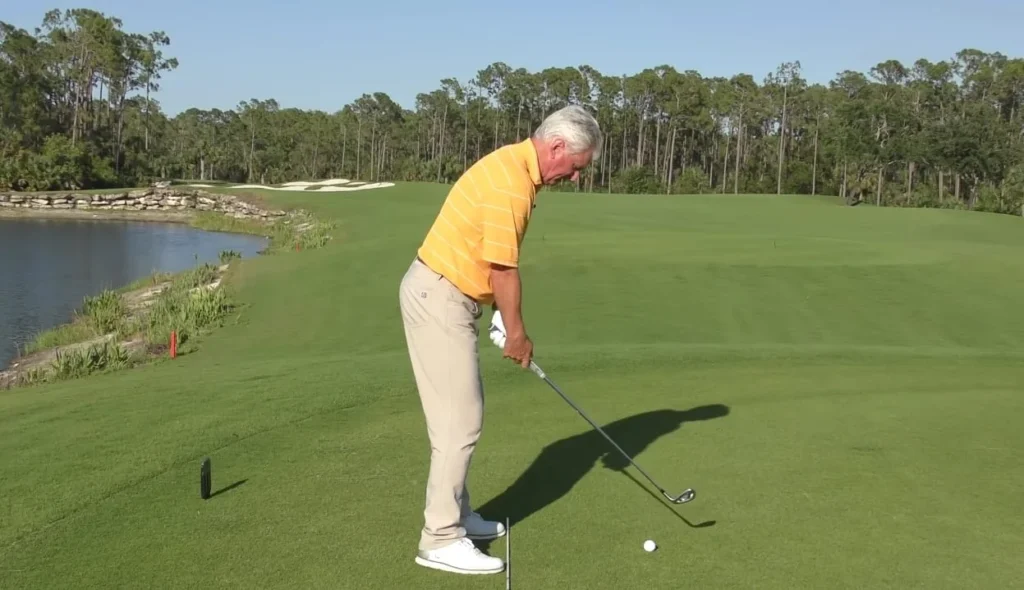
Conclusion
What did we learn in this episode of our “content net” journey on golf? Well, we learned how to improve our golf swing posture. In this article, you’ll find information regarding C-posture and S-posture. You will understand how to become a more flexible golfer. So, keep reading this piece again and again; embrace the tips we’ve mentioned here. Slowly, you will become an amazing and productive golfer.
Go through GolfPosturePOD reviews online. Take a look at any golf posture training aid easily available on Google. If you wanna know how posture affects golf swing, read the linked article. Happy golfing, mates!
FAQs – Golf Swing Posture
What should be a golf posture setup?
Golf posture setup involves placing your body into its correct position before initiating a golf swing, and taking into account elements e.g., stance width, spine angle, and weight distribution. A successful setup typically features tall legs erect with shoulders back, arms relaxed and knees slightly bent forward for irons or slightly wider for woods.
What is C-posture in golf?
C-posture in golf refers to an often occurring swing fault characterized by excessive rounding of the upper back, creating an effect similar to rounding an envelope (click to see image). This posture leads to limited rotation, loss of power, and uneven ball striking; golfers with C posture often struggle with maintaining proper spine angle as well as flexibility issues.
What is the proper golf arm position?
At the address, arms should hang naturally from shoulders with a slight bend in elbows; during the address, they should maintain a connection to the body while remaining connected in the backswing forming a triangle between shoulders and arms at the top of the swing.
How should your feet be positioned for golf?
Foot positioning in golf is critical for balance, stability, and weight transfer during each swing. Irons and wedges require feet positioned shoulder-width apart with toes slightly turned out for optimal weight transfer through rotation; for drivers and fairway woods, however, drivers require wider than shoulder-width stances to provide additional support during their swings.
How do you find the correct spine angle in a golf swing?
Finding the right spine angle when golf swinging means you gotta create a neutral position to foster proper posture and alignment. To find this optimal spine angle, start by standing tall with feet shoulder-width apart and knees slightly bent; from here tilt forward from hips while keeping back straight until the clubhead touches the ground.
How to fix S-posture?
S-posture in golf refers to an all too common swing fault characterized by excessive arching of the lower back, similar to what resembles the shape of an “S.” It can be fixed by strengthening core muscles, improving hip mobility, maintaining neutral spine alignment, and engaging in exercises like planks, hip flexor stretches, or pelvic tilts.
How to stay in posture on a golf swing?
Maintaining correct posture while swinging a golf club is paramount to creating consistency and producing power. To stay in posture during each swing, focus on a proper setup, engaging core muscles for stability, avoiding unnecessary movement during swinging, and maintaining an unbroken rhythm to minimize disruptions of posture during your swings.
How to stay in posture in golf swing irons?
Staying upright when shooting iron shots requires careful thought concerning setup, balance, and maintaining spine angle throughout your swing. Begin with an ideal setup where your feet are shoulder-width apart and your spine stays neutral during a swing. Use drills specifically tailored for iron shots such as single leg balance exercises or stability drills designed specifically to reinforce proper posture and alignment during every shot you take.
How to stop standing up in the backswing?
To prevent standing up on the backswing, focus on maintaining lower body stability, engaging core muscles, and maintaining spine angle throughout the swing. Practice chair drills or wall drills to reinforce proper posture and alignment. Also, initiate backswing using proper hip turn and weight shift rather than lifting or standing up from the ball; visualization or mental imagery may further help reinforce feeling like staying in posture during swing.
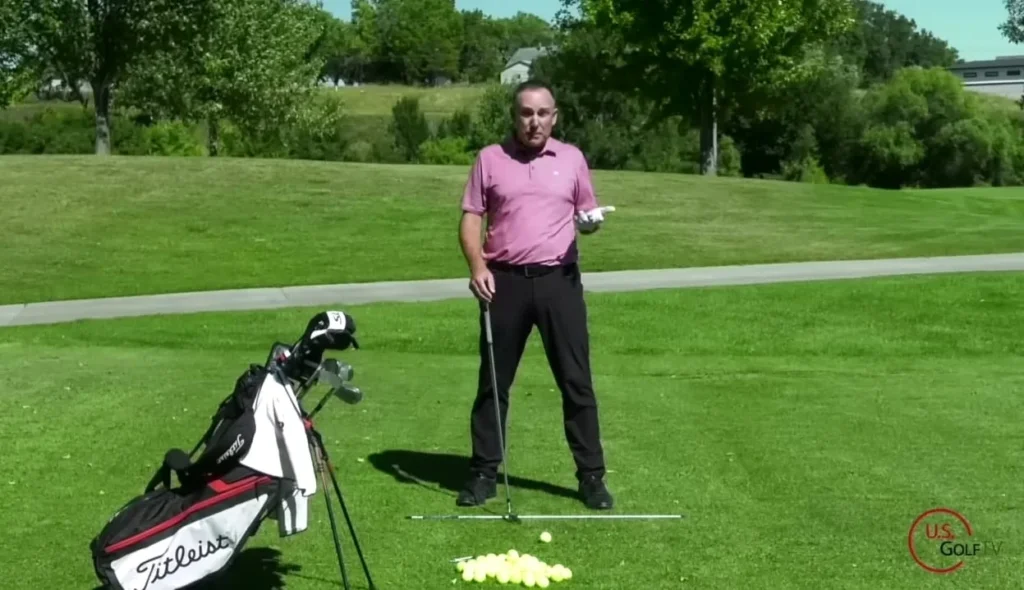

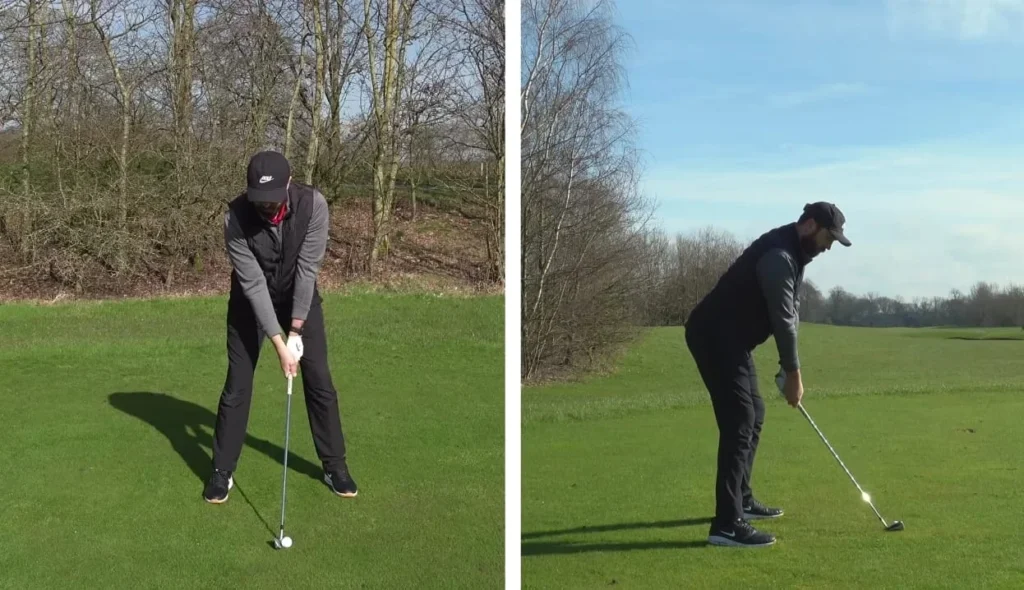





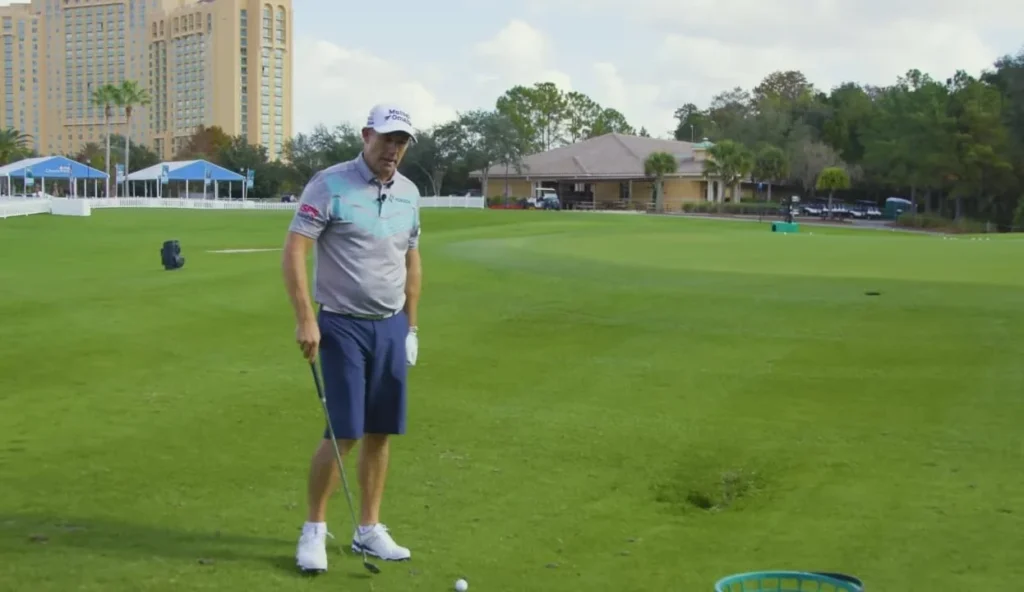
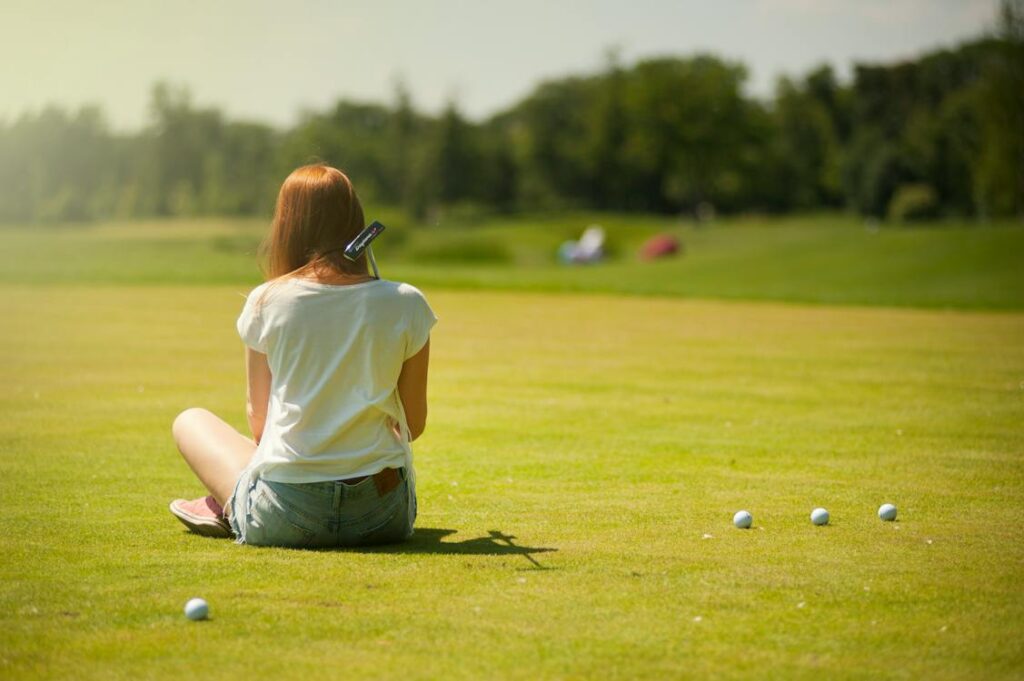
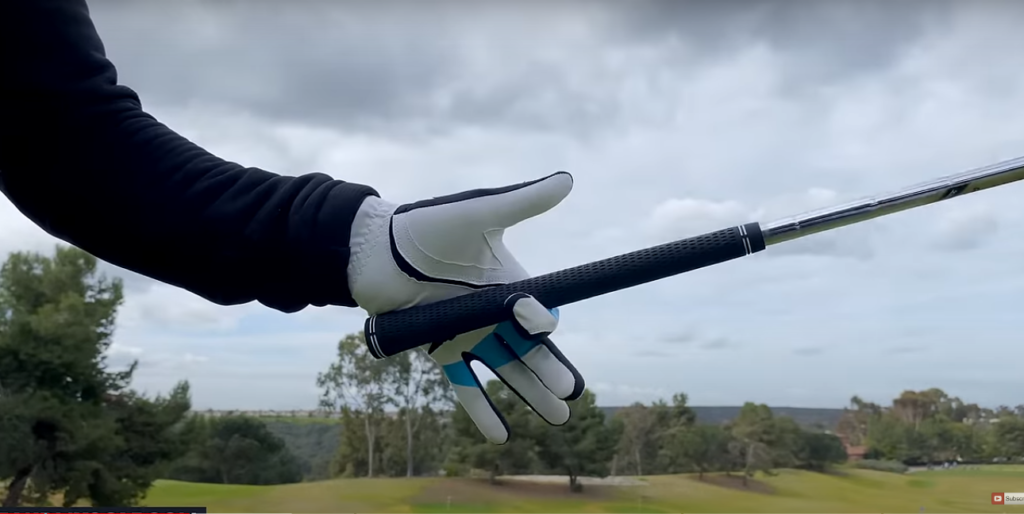
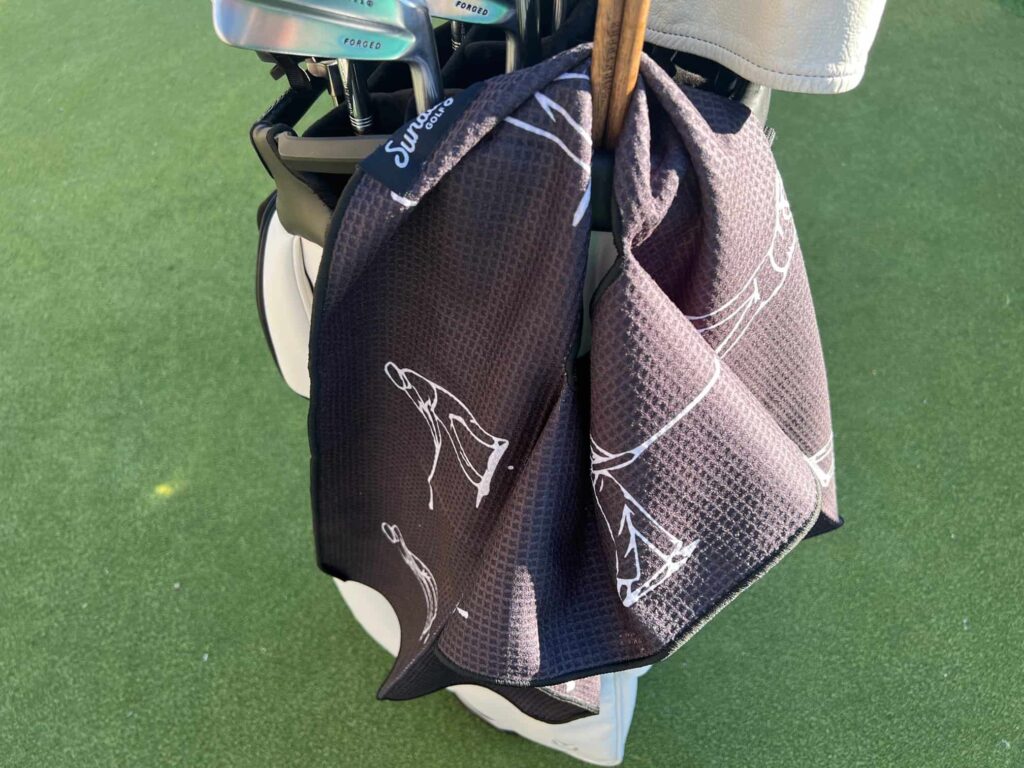
I have spent over three hours on the internet today but have yet to come across a single article as intriguing as yours. It is sufficient to satisfy my curiosity. In my opinion, the web would be considerably more useful than ever before if all website proprietors and bloggers produced high-quality content like yours.
Thank you so much for the Appriciation